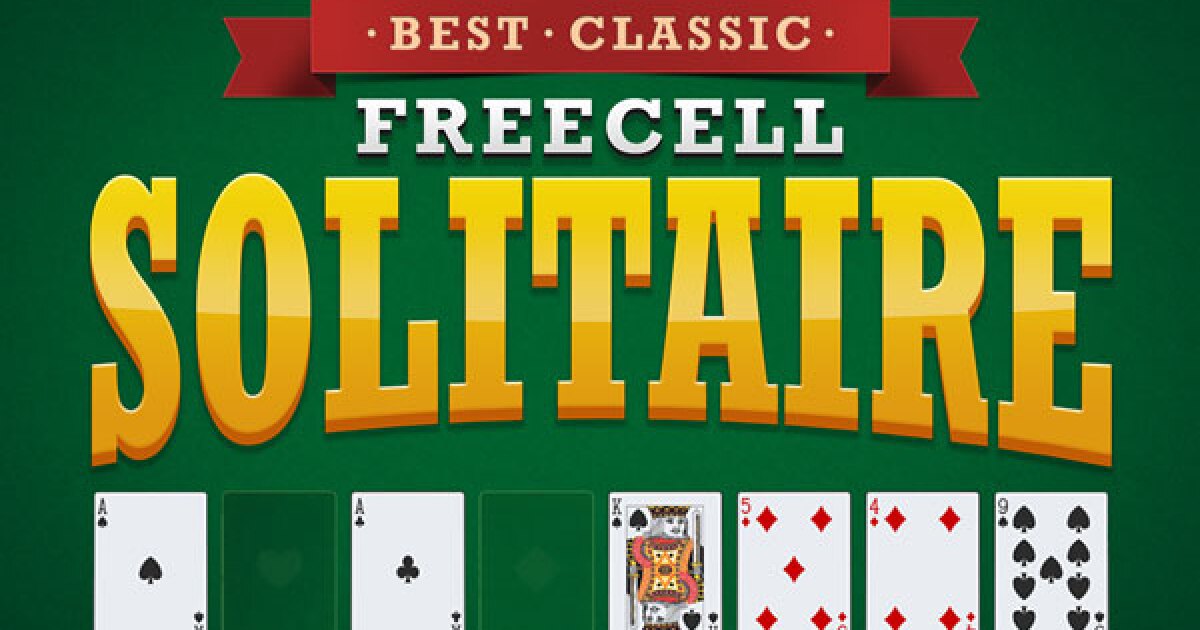Like us on Facebook! You can always post a question there.
Freecell Solitaire
FreeCell is the second solitaire game I create, before that I created Klondike (or 'classic' solitaire) and I've also made a few card games like Hearts, Spades and Whist. If you have any questions, comments or requests for other solitaire games you can send them to admin@cardgames.io or tweet at me @cardgamesio.
Important shortcut keys
- But do not dispair, 123 Freecell will be here every single day, always free for you to find your way to a freecell victory! One Freecell is one of the most difficult freecell games on this site. You only have on free cell to move cards in and out of during the game play. Usually you will have four in Classic Freecell.
- FreeCell Solitaire is perfect for beginners! A different approach to the game, but still very easy to follow. All of the cards are flipped at the start and there is extra space to move the cards that are in.
| Toggle full screen: | F11 (most browsers) |
| Undo move: | Ctrl-Z |
| Deal again: | F2 |
| Close dialog box: | Esc |
The name of the game, FreeCell, comes from the four free cells in the top-left corner of the game board which can be used to temporarily store cards. The game was invented by Paul Alfille as a modification of an older game. Alfille also created a first FreeCell Solitaire video game in 1978. Although available in earlier version of system Windows, FreeCell gained much of its popularity when it was distributed with Windows 95. In that version there were 32,000 different card deals available. There was an attempt in 1994 to solve all of the 32,000 card deals. The project lasted almost a year and indicated that only one of the card deals was unsolvable. Since then, FreeCell remains famous for the fact that for any randomly shuffled card deal, the game is almost certainly solvable.
How to play?
As with most other patience and solitaire games, the player starts with a shuffled deck and must sort the cards from aces to kings for each suit separately. The sorted cards are being placed in the foundations in the top-right corner of the game board, beginning with aces. That is, a card can be placed in the foundation only if there is a card already there with a number lower by one and the same suit. If there are no available cards which can be placed in the foundations, the player must move the cards around on the game board so that more cards with low numbers are directly available.
As a rule, the player can move only one card at a time - unlike in other solitaire games in which the player can lift an entire stack of cards and move it to a different location. If a player wants to move more than one card to a new location, it is necessary to use free cells, which are in the top-left corner of the game board. The game automatically calculates how many cards a player can move based on the number of available free cells, as moving cards one by one can be tedious. Any card can be placed in a free cell. Also, any card can be placed in an empty tableau. However, a card can be placed on another card only if the latter card has a number higher by one and a suit of the opposite color to the former.
Freecell Undo Online

Freecell 123




Freecell 123
FreeCell Solitaire Online XL does not have a specific scoring scheme. The progress in the game is indicated by the number of cards left on the game board (the fewer the better). This however is not relevant when players compare their results. A relevant result is a percentage of games won, an average time to solve a game, or the longest winning streak.
Here are a couple of tips. Right-click on a card to send it to a free cell. If no free cells are available or a card already is in a free cell, then a right-click sends a card to a foundation (if possible). The game automatically sends to the foundation cards that will not be useful in the game down the road.
